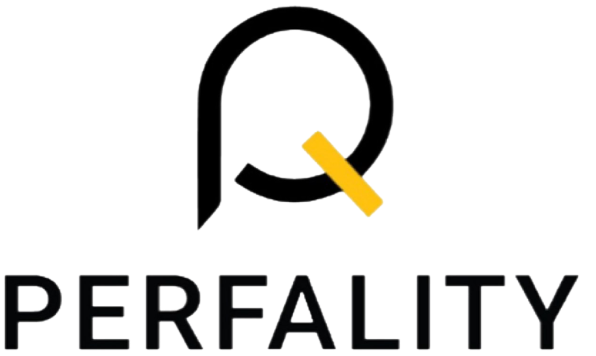- Perfality
- August 28, 2025
- 11:00 am
- Read Time: 5 mintues
You’ve probably seen people throw numbers around when talking about Amazon PPC—$0.80 per click here, $1.50 there—but rarely do those numbers reflect what you’ll pay. That’s because Amazon PPC cost in 2025 doesn’t come with a flat rate. It’s fluid. It moves with your niche, your timing, your bids, and your strategy.
If you’re thinking about launching or scaling your brand on Amazon this year, understanding how much it’ll cost to advertise isn’t optional—it’s critical. But the good news? You can get more control over your spending than you think. With smart planning and proper amazon ppc optimization, you can keep costs reasonable while still growing your visibility.
Let’s walk through the real breakdown of what affects your Amazon PPC cost—and how to make every ad campaign work harder for you.
Why Amazon PPC Cost Isn’t One-Size-Fits-All
First, let’s be clear: Amazon PPC doesn’t have a set price tag. It works on an auction system, meaning you’re competing against other sellers for placements. The more competitive your category, the more you’re likely to spend. But that doesn’t mean high-cost categories are off-limits—it just means your strategy needs to be sharper.
Several key factors shape your cost per click:
- Your product’s category
- The keywords you’re targeting
- Your bid strategy and ad type
- The season or time of year
- The overall quality of your listing
In short, it’s not just what you’re selling—it’s how you’re selling it. That’s where amazon ppc optimization becomes a game-changer.
Average Amazon PPC Cost by Category (2025 Estimates)
Here’s a look at the typical ad costs across major categories. Keep in mind, these are average estimates—actual costs can swing above or below depending on competition.
- Beauty & Personal Care: $0.90 – $1.60 CPC
- Electronics: $1.20 – $2.50 CPC
- Home & Kitchen: $0.85 – $1.50 CPC
- Pet Supplies: $0.70 – $1.30 CPC
- Clothing & Accessories: $0.75 – $1.40 CPC
- Toys & Games: $0.95 – $1.80 CPC
- Health & Household: $1.00 – $1.90 CPC
Knowing your category’s average is helpful, but it’s just a starting point. What really matters is how you manage your amazon ppc daily budget and ensure that every dollar leads to real results.
How to Budget for Amazon Ads in 2025
Most sellers starting out don’t know how much they should spend each day. A good baseline? Start with $25–$50 per day, then adjust based on your performance data.
The best way to control your amazon ppc daily budget is by keeping campaigns focused. Don’t spread your budget across dozens of keywords at once. Start small. Test. Optimize. Then scale.
Also, be prepared for variation. For example, your budget might stretch further in March than it will in November during the peak holiday rush. That’s why amazon advertising rates fluctuate—not because Amazon changes the rules, but because more sellers are bidding aggressively.
What Are You Really Paying For?
Beyond clicks, your amazon ppc cost includes other indirect expenses. These are often overlooked but can erode your margins if you’re not careful.
- High return rates on poorly targeted traffic
- Ineffective copy or images reducing your conversion rate
- Overspending on irrelevant keywords
- Underutilizing match types or campaign structures
The real goal isn’t just lower CPC—it’s better performance. And that starts with amazon ppc optimization done correctly.
Amazon PPC Optimization That Actually Works
If you want to reduce your amazon ppc cost without killing your traffic, you need to look beyond surface-level tweaks. This is where optimization plays a bigger role than ever in 2025.
Here’s how top-performing amazon sellers approach it:
1. Keyword Targeting with Intent
Use tools like Helium 10, Data Dive, or Amazon’s own Brand Analytics to find long-tail, high-intent keywords. These typically have lower competition and better conversion potential. Avoid the trap of bidding on overly broad terms—those will drain your budget fast.
2. Smarter Campaign Structures
Segment campaigns by keyword type (branded vs. non-branded), match type, and product. This makes amazon ppc campaign optimization far easier and helps you understand which parts of your strategy are working—and which aren’t.
3. Negative Keyword Usage
Don’t waste spend on clicks that won’t convert. Use negative keywords to filter out irrelevant traffic. It’s one of the simplest amazon bid optimization tactics that most sellers overlook.
4. A/B Testing for Better ROI
Test different ad copy, images, and titles. Even a 1% improvement in your conversion rate can dramatically lower your overall amazon ppc cost.
What’s a Good Conversion Rate in 2025?
The amazon ppc average conversion rate in 2025 sits around 9–12% across most categories. If you’re significantly below that, it’s likely a sign that something in your listing or targeting needs work.
This is where working with a trusted amazon ppc management team or agency can give you an edge. They can spot what’s underperforming and help restructure your campaigns with data-backed insights.
What About the Cost of Managing PPC?
If you’re not running ads solo, you’ll also want to factor in your amazon ppc management cost. Agencies or freelancers typically charge a percentage of ad spend (10–20%) or a flat monthly fee.
Some sellers hesitate to pay for amazon ppc management, thinking they’re saving money by doing it themselves. But the right expert can save you thousands in wasted spend through proper optimization.
Why It Pays to Work with a Team Like Perfality
When you’re trying to juggle product research, inventory planning, customer support, and now amazon advertising optimization—it can be a lot.
That’s where Perfality steps in.
We help brands cut through the noise and run lean, efficient campaigns that convert. Whether it’s through amazon bid optimization, keyword analysis, or even full campaign setup, our team takes the guesswork out of the process.
We don’t chase trends—we build campaigns that perform long-term. And if you’ve been struggling with scaling, overspending, or just figuring out what the next step looks like—we’ve got you covered.
Final Thoughts
In 2025, the Amazon ad space is only getting more competitive. But that doesn’t mean you need to overspend to keep up. When you approach your amazon ppc optimization with a data-first mindset, you can control costs, boost results, and grow sustainably.
You don’t need to guess at what your amazon ppc cost will be—you just need to understand how to manage it. With the right strategy and support, your campaigns don’t just break even—they scale. Want help getting there? Reach out to the team at Perfality. We’ll make sure your ad dollars go further.






